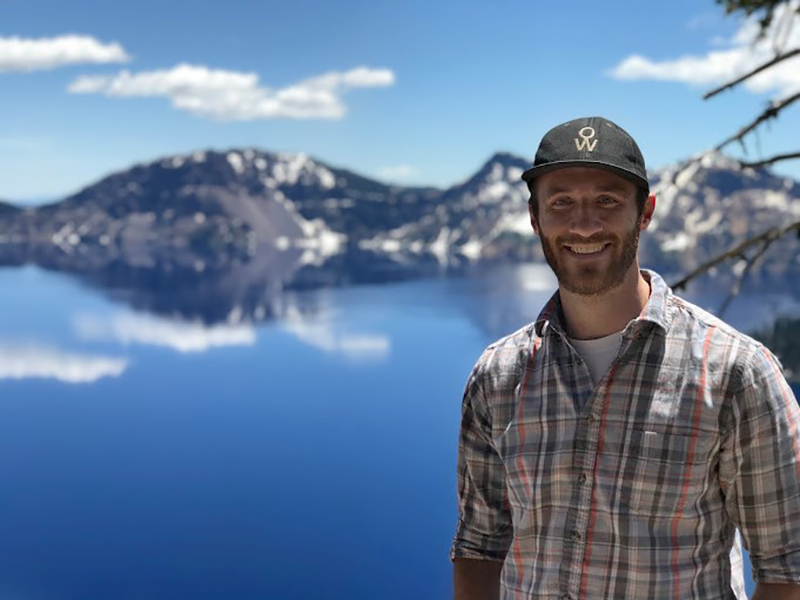July 9, 2021
Volcano research leads to better understanding of their deep structure

Jonathan Delph at Crater Lake, Oregon, USA. Crater Lake is the caldera of the active Mount Mazama volcano in the Cascades volcanic arc. (Photo provided by Rebecca Delph)
Key Research Finding:
The deep structure of volcanoes has proven difficult for geoscientists to understand due to the inherent difficulty of seeing below the Earth’s surface. To get a more holistic understanding of volcanoes and their subsurface structure, a team of researchers from multiple disciplines, including Jonathan Delph of Purdue University’s Department of Earth, Atmospheric, and Planetary Sciences, combined their expertise to better understand how their datasets can be interpreted in light of the others.
Various geoscientific disciplines can use methods that can provide insight into the deep-seated structure and processes that take place below a volcano. For instance, seismologists can analyze how seismic waves change speed or lose energy below a volcano, geochemists can investigate the geochemical variations in volcanic eruptive products and field geologists can examine the lithological characteristics of extinct volcanic systems that have been uplifted and exposed at the surface to analogous active volcanoes. However, these different analyses often lead to different conceptual ideas about the subsurface “plumbing” systems that feed volcanism.
This study first outlines the conceptual models that have been developed for volcanic systems based on various individual disciplines, outlining the geophysical and geochemical characteristics of active magmatic systems, and field studies of exposed and extinct magmatic systems. From this conceptual framework, the authors then investigate a very volcanically active region in the Central Andes of South America as a case study to demonstrate how the seemingly contradictory models from the different disciplines of subvolcanic structure can be reconciled.
Purdue professor, title:
Jonathan Delph, assistant professor of earth, atmospheric, and planetary sciences, College of Science. He is a tectonocist and seismologist, specializing in earthquakes and volcanoes.
Journal name: Journal of Geophysical Research: Solid Earth (Special Issue: Merging geophysical, petrochronologic and modeling perspectives to understand large silicic magma systems)
Funding: None
Brief summary of methods: This team of researchers assessed a region in the central Andes of South America with dense seismic data coverage and compositionally diverse volcanics that have erupted in the last ∼8 Ma. The geochemical and seismic datasets appear to reveal evidence for magma stagnation and evolution at two main locations: near the crust-mantle transition and in mid-crustal magma reservoirs. Contextualizing these results with the apparently continuous magmatic structure seen in exposed, extinct volcanic systems indicates that these contrasting perspectives can be reconciled by understanding the sensitivities and limitations of the individual datasets. Thus, the evidence that has led to the discrete conceptualizations of magma systems often inferred from seismic data or geochemistry are consistent with more-or-less continuous magmatic systems throughout the crust.
Writer: Cheryl Pierce
Media contact: Brittany Steff, 765-494-7833; bsteff@purdue.edu
Source: Jonathan Delph, jdlph@purdue.edu
Note to journalists: Journalists visiting campus should follow visitor health guidelines.

